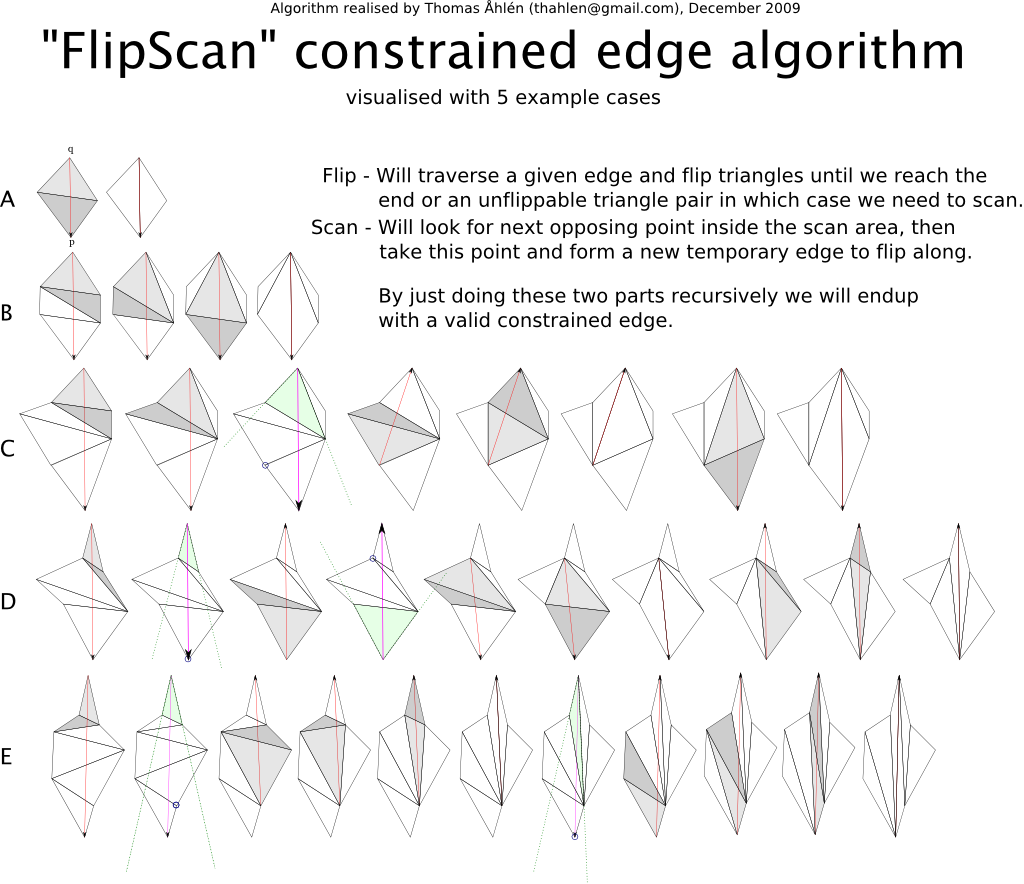mirror of
https://github.com/jhasse/poly2tri.git
synced 2025-12-03 02:09:32 +01:00
e9938d9c6816e2943238cce6ec330f0f55d96ad5
Add documentation and code patches for maintenability
Since there are no Input validation of the data given for triangulation you need to think about this. Poly2Tri does not support repeat points within epsilon.
- If you have a cyclic function that generates random points make sure you don't add the same coordinate twice.
- If you are given input and aren't sure same point exist twice you need to check for this yourself.
- Only simple polygons are supported. You may add holes or interior Steiner points
- Interior holes must not touch other holes, nor touch the polyline boundary
- Use the library in this order:
- Initialize CDT with a simple polyline (this defines the constrained edges)
- Add holes if necessary (also simple polylines)
- Add Steiner points
- Triangulate
Make sure you understand the preceding notice before posting an issue. If you have an issue not covered by the above, include your data-set with the problem. The only easy day was yesterday; have a nice day.
TESTBED INSTALLATION GUIDE
Dependencies
Core poly2tri lib:
- Standard Template Library (STL)
Testbed:
- gcc
- OpenGL
- GLFW
- Python
waf is used to compile the testbed. A waf script (86kb) is included in the repositoty.
Building the Testbed
Posix/MSYS environment:
./waf configure
./waf build
Windows command line:
python waf configure
python waf build
Alternatively, the testbed can be built using cmake. See below.
Running the Examples
Load data points from a file:
p2t <filename> <center_x> <center_y> <zoom>
Random distribution of points inside a constrained box:
p2t random <num_points> <box_radius> <zoom>
Examples:
./build/p2t testbed/data/dude.dat 300 500 2
./build/p2t testbed/data/nazca_monkey.dat 0 0 9
./build/p2t random 10 100 5.0
./build/p2t random 1000 20000 0.025
BUILD WITH CMAKE
Build the library
mkdir build && cd build
cmake -GNinja
cmake --build .
Build and run the unit tests
mkdir build && cd build
cmake -GNinja -DP2T_BUILD_TESTS=ON
cmake --build .
ctest --output-on-failure
Build the testbed
mkdir build && cd build
cmake -GNinja -DP2T_BUILD_TESTBED=ON
cmake --build .
References
- Domiter V. and Zalik B. (2008) Sweep‐line algorithm for constrained Delaunay triangulation
- FlipScan by library author Thomas Åhlén
Description
Languages
C++
94.2%
C
3.7%
CMake
1.5%
Meson
0.6%
